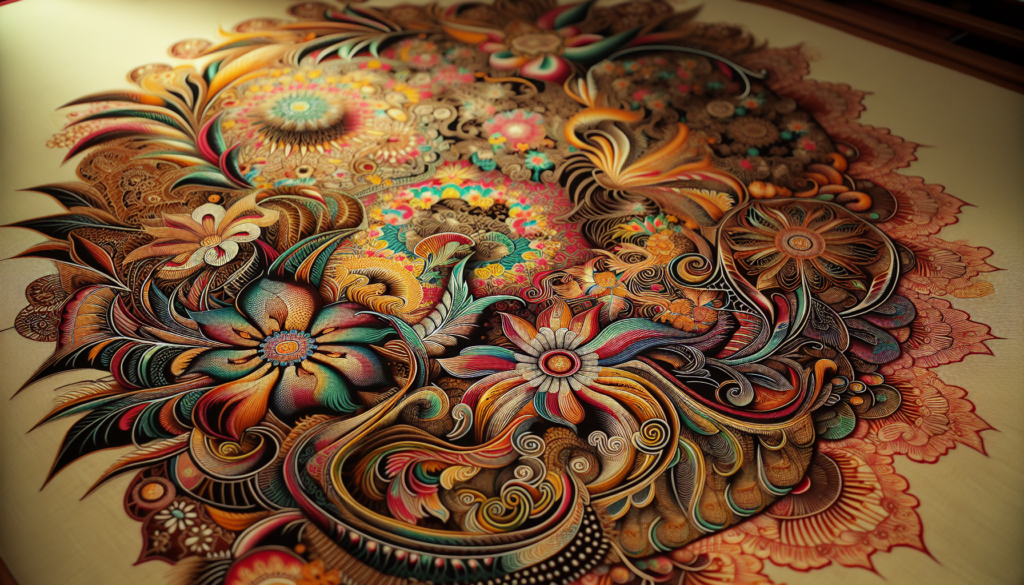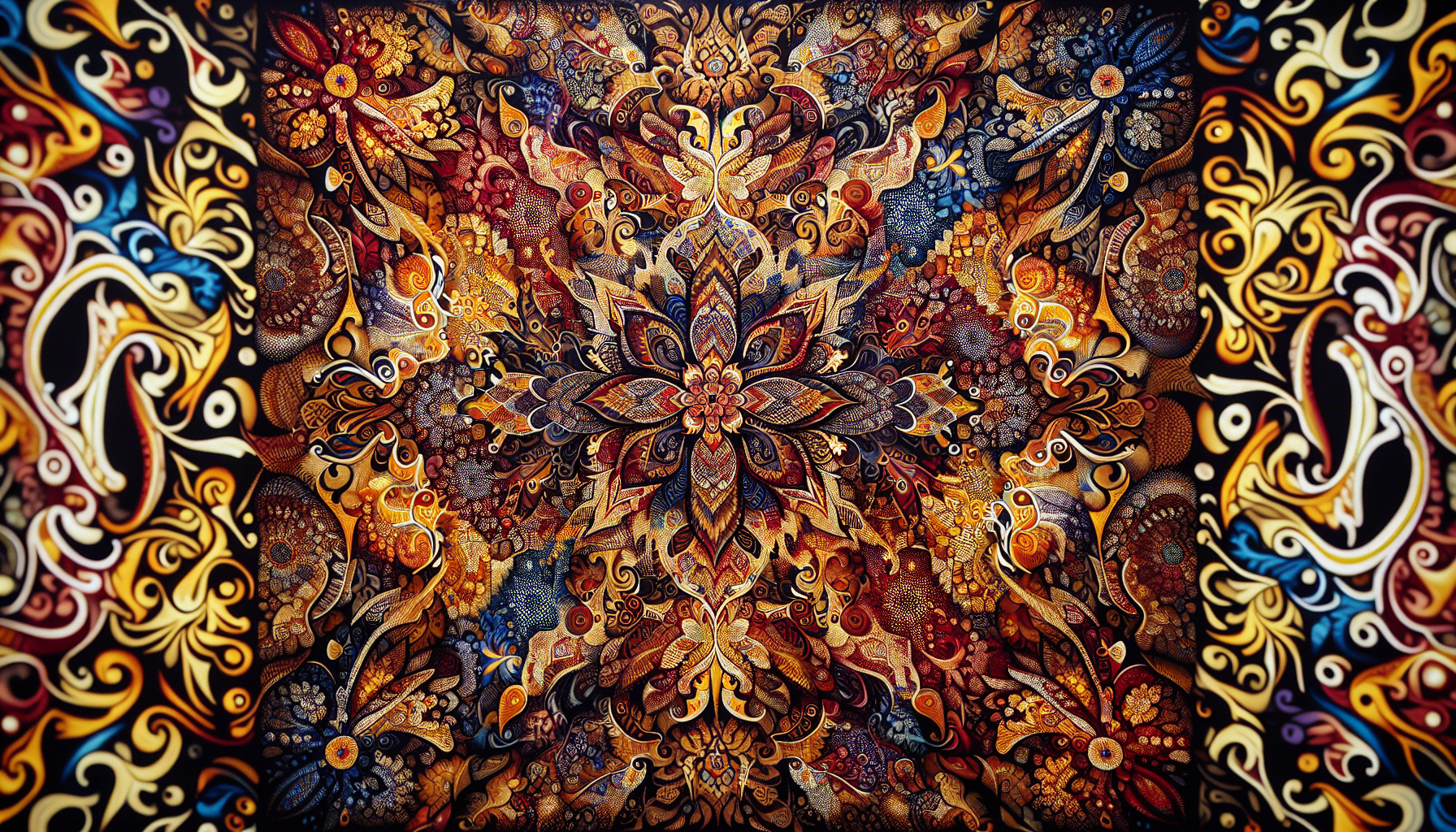Have you ever wondered about the intricate beauty and unique artistry of batik painting? This traditional form of painting, which combines artistry and craftsmanship, has a rich history and is celebrated for its colorful patterns and detailed designs. In this guide, you will learn the essentials of batik painting, understand the tools and materials needed, and explore the techniques to create beautiful works of art.
Understanding Batik Painting
Batik painting is a traditional art form renowned for its vibrant colors and detailed designs, often incorporating symbols and motifs that tell a story or convey cultural significance. Originating from Indonesia, it has been adopted and adapted in various countries, resulting in diverse styles. It combines the art of painting with the skill of wax-resist dyeing, resulting in unique patterns that are both intricate and expressive.
The History and Cultural Significance
Batik has been an expressive medium for centuries, with its roots traced back to ancient times. Its cultural significance varies across regions. In Indonesia, it plays a critical role in ceremonies and rituals. In other parts of Asia, Africa, and the Middle East, batik has different meanings and uses. The historical development of batik has made it more than just an art form; it is a narrative expressed through fabric.
The Principles of Batik Design
Batik designs are characterized by rich colors and intricate patterns. The principles of design in batik include the use of balance, contrast, and harmony. These are combined with traditional motifs and symbols, allowing you to convey messages and tell stories through your art. Understanding these principles will help you create meaningful and aesthetically pleasing pieces.
Essential Tools and Materials for Batik Painting
Before you embark on your batik painting journey, you need to gather the necessary tools and materials. The quality of these items will affect the outcome of your work, so it’s vital to choose wisely.
Tools for Batik Painting
- Canting: A traditional tool used to apply wax to the fabric. It has a wooden handle and a copper reservoir that enables precise application.
- Brushes: Various brushes allow you to cover large areas with wax or apply intricate details.
- Stamps: Made of copper or wood, these are used to apply wax in repeated patterns.
- Dye Container: A container where fabric pieces are submerged in dye.
Materials Required
- Fabric: Typically cotton or silk, which is suitable for absorbing dye.
- Wax: A mixture of beeswax and paraffin wax, crucial for creating resistance to the dye.
- Dyes: A variety of colors that are used for your pattern.
- Frame: To stretch the fabric while working on it, helping maintain tension and even application.

Techniques of Batik Painting
Mastering the techniques of batik is essential to producing beautiful designs. These techniques can range from simple to complex, depending on your skill level and the detail of your intended design.
Preparing the Fabric
The first step in batik painting is to prepare your fabric. Choose a fabric that is natural, like cotton or silk, as synthetic fabrics do not absorb wax or dye well. Wash it thoroughly to remove any starch or sizing that may interfere with the dyeing process.
Applying Wax
Using a canting or brush, apply wax to areas of the fabric that you want to remain undyed. The wax functions as a resist, so any part of the fabric covered in wax will not absorb the dye. This step can include freehand drawing using a canting for intricate lines or using stamps to cover larger areas quickly.
Dyeing the Fabric
Once the fabric is waxed, you immerse it in a dye bath. Start with the lightest color if you are planning multiple dye baths. After dyeing, let the fabric dry completely. Continue the process by adding more wax to new areas, creating multiple dye layers, until your design is complete.
Removing the Wax
After the dyeing process is finished, you need to remove the wax. This is typically done by boiling the fabric in hot water, which melts the wax off the fabric’s surface. After boiling, place the fabric between layers of absorbent paper and lightly iron to remove any remaining wax.
Finishing Touches
Once the wax is completely removed, your batik design is revealed in full glory. At this stage, you might need to fix any areas that require touch-up and iron the fabric to smoothen it and enhance the vibrancy of the colors.
Care and Preservation of Batik Art
Taking care of your batik piece is crucial to ensure its longevity and maintain its vibrant colors. Proper care includes cleaning, storing, and displaying your artwork thoughtfully.
Cleaning Batik Fabric
Always clean batik fabric gently. Use mild detergent and lukewarm water for washing and avoid wringing it out, as this can distort the fabric.
Storing Batik Pieces
Store batik pieces away from direct sunlight and in a dry place to prevent fading and damage from moisture. Rolling the fabric rather than folding helps avoid creases.
Displaying Batik Art
When displaying batik art, it’s important to minimize exposure to direct sunlight. Utilizing framed glass or acrylic casings can protect it from dust and environmental stressors.

The Art of Designing Your Own Batik Patterns
Developing your unique batik design involves creativity and meticulous planning. Here’s how you can create your patterns and designs.
Drawing Inspiration
Draw inspiration from the world around you, whether it’s nature, architecture, or cultural motifs. The traditional elements can be blended with modern themes to give it a contemporary twist.
Planning Your Design
Sketch your design before applying it to the fabric. Consider using symmetry, repetition, and flow to make your design coherent and visually pleasing.
Exploring Different Styles and Influences in Batik
Batik art varies across the globe with diverse techniques and influences contributing to unique styles.
Javanese Batik
Characterized by intricate geometric and human patterns, Javanese batik often tells a story. It is heavily influenced by mythology and has religious and cultural significance.
Malaysian Batik
Known for its vibrant colors and floral patterns, Malaysian batik is freehand and less focused on geometric symmetry, offering spontaneous and fluid designs.
African Batik
African batik combines bold motifs and bright colors, often using animal and nature-inspired patterns to convey cultural narratives.
Encouraging Sustainability in Batik Production
As batik gains popularity, it’s essential to consider the environmental impact of its production.
Eco-Friendly Materials
Choosing organic fabrics and non-toxic dyes helps reduce environmental harm, ensuring that batik production is sustainable.
Ethical Practices
Supporting artisans who practice fair trade and sustainable methods ensures that batik remains a viable and ethical art form.
Conclusion
Batik painting is not only an artistic expression but a journey into cultural heritage and creativity. By learning the techniques, understanding the materials, and exploring various styles, you can create beautiful batik art that resonates with both traditional and contemporary artistry. Embrace this craft with mindful practice, and let your creativity flourish through the intricate designs of batik.



